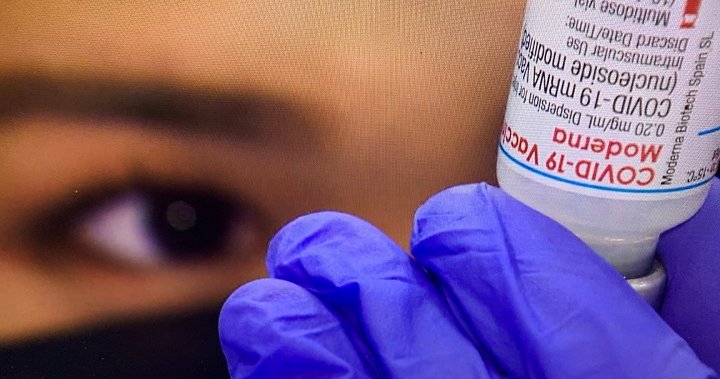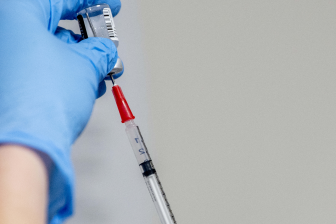New COVID-19 vaccine data released by Public Health Ontario appears to reinforce the effectiveness of how shots are curbing the confirmed cases, hospitalizations and deaths.
An epidemiological summary released by the provincial agency on Wednesday looked at cases between Dec. 14 and June 26, and scientists compared the cases with vaccination data from Ontario’s vaccine database.
“While vaccines provide a high degree of protection from COVID-19 infection, it is expected that a small proportion of vaccinated individuals may become infected as no vaccine is 100 per cent effective,” the document said.
“When COVID-19 cases occur following vaccination, there is evidence that vaccines reduce symptomatic infection, the severity of illness, as well as transmission.”
Read more:
Increased vaccinations, ongoing health measures could mean 600 fewer COVID-19 cases in Hamilton
Between mid-December and the end of June, more than 9.86 million people in Ontario received at least one dose of an approved vaccine (Pfizer-BioNTech, Moderna or AstraZeneca). During the same period of time, there were 400,413 confirmed cases of COVID-19.
Officials said 3.9 per cent (15,592) of the total confirmed cases occurred in partially vaccinated individuals while 0.4 per cent (1,635) occurred in people who were fully immunized, dubbed “breakthrough” cases. They noted the proportion of cases increased in older individuals and those 80 and older had the highest number of cases.
Experts noted 51.7 per cent of those who got infected after being vaccinated did not have full immunity, noting it was less than 14 days from when the first dose was administered.
However, as time increased, officials said the number of post-vaccination cases fell “dramatically.” They said cases generally began to decline 10 days after the first dose was administered and a “marked decrease” was seen 28 or more days after the first dose.
Read more:
Doug Ford says next steps in Ontario’s COVID-19 reopening plan to be announced within 3 weeks
For people who had two vaccine doses, scientists said there were “very few cases” after the second shot and 4.6 per cent of post-vaccination cases happened 14 or more days after inoculation.
When it comes to deaths and hospitalizations, there was a stark difference between those who were vaccinated and unvaccinated.
Looking at those 12 and older who were asymptomatic and symptomatic before they died, 289 people were partially vaccinated and 34 were fully vaccinated. Meanwhile, the total number of fatal unvaccinated cases in the same age range was 4,284.
For those 12 and older who contracted COVID-19 and had to be admitted to an Ontario intensive care unit, 158 were partially vaccinated and 11 were fully vaccinated. The total number of unvaccinated patients admitted to an ICU was 3,388.
Read more:
Ontario gym that relied on exemption to stay open during COVID-19 faces variant outbreak
In terms of general hospital admissions (excluding ICU patients), 1,063 people were partially vaccinated and 90 were fully vaccinated. The total number of unvaccinated patients admitted to an ICU was 14,083.
Meanwhile, when it comes to the three COVID-19 vaccines being deployed across Ontario, experts looked at the efficacy of each jab. During the time period, 7,288,640 people received Pfizer-BioNTech shots while 1,711,099 people received Moderna and 864,745 received AstraZeneca.
The report said 0.16 per cent of recipients who were partially vaccinated with Pfizer-BioNTech, 0.11 per cent of recipients who were partially vaccinated with Moderna and 0.23 per cent of recipients who were partially vaccinated with AstraZeneca ultimately tested positive for COVID-19 (asymptomatic and symptomatic). For those who were fully vaccinated, 0.02 per cent had Pfizer-BioNTech, 0.02 per cent had Moderna and less than 0.01 per cent had AstraZeneca.
As for variants of concern, experts looked at asymptomatic and symptomatic case data between Feb. 3 and June 26. They found 53.6 per cent of partially vaccinated and breakthrough cases (8,935 people) involved the Alpha variant followed by 2.3 per cent (392 people) involving the Delta variant, 1.5 per cent (255 people) involving the Gamma variant and 0.5 per cent (79 people) involving the Beta variant. The rest of the cases involved mutations of interest and unconfirmed strains of COVID-19.
View link »
© 2021 Global News, a division of Corus Entertainment Inc.
















































